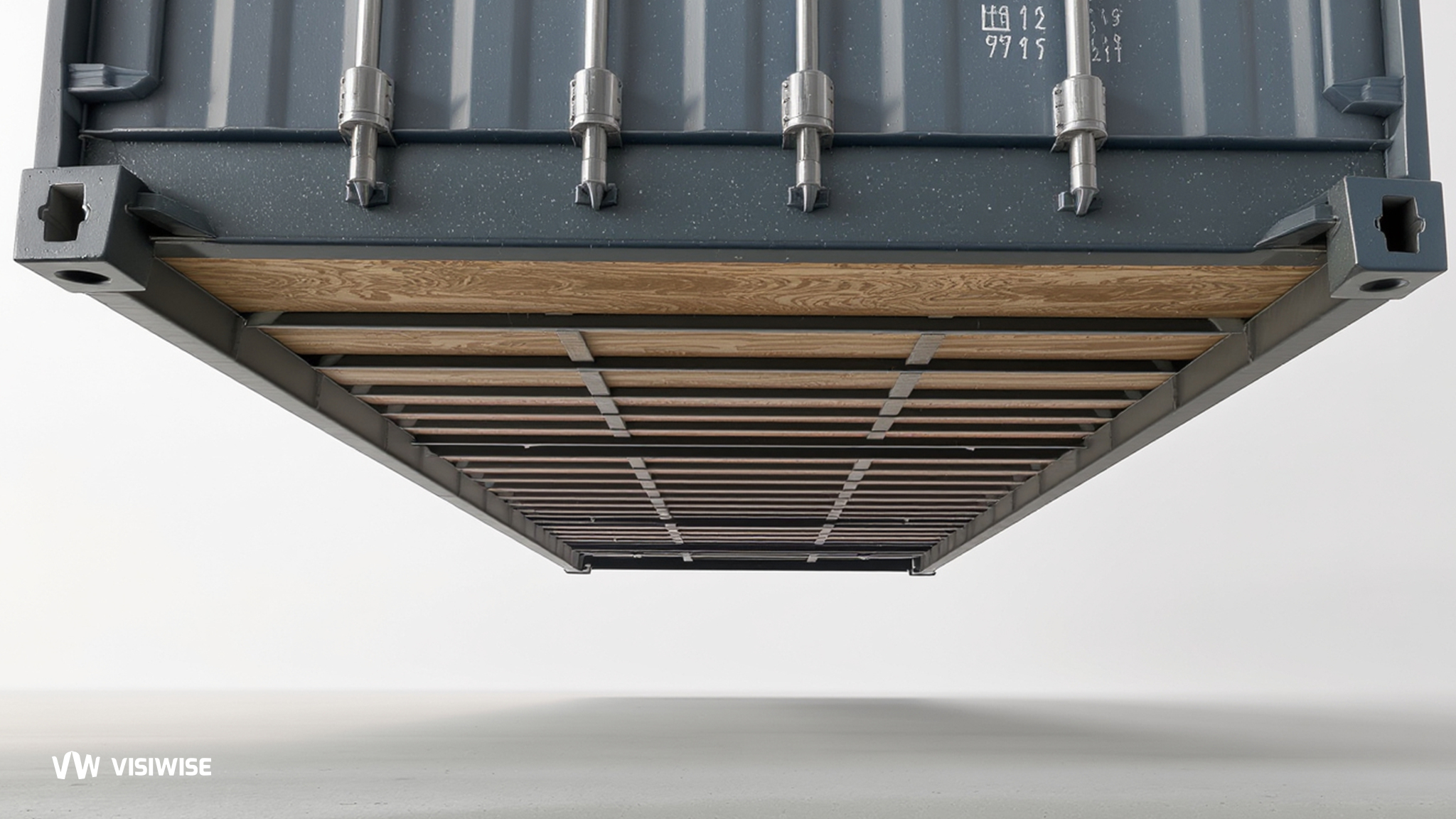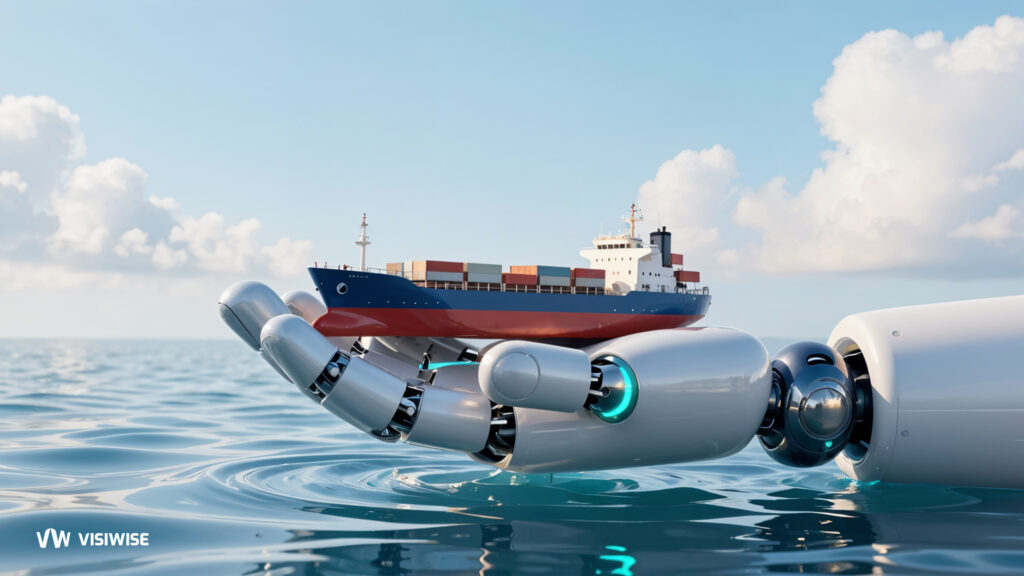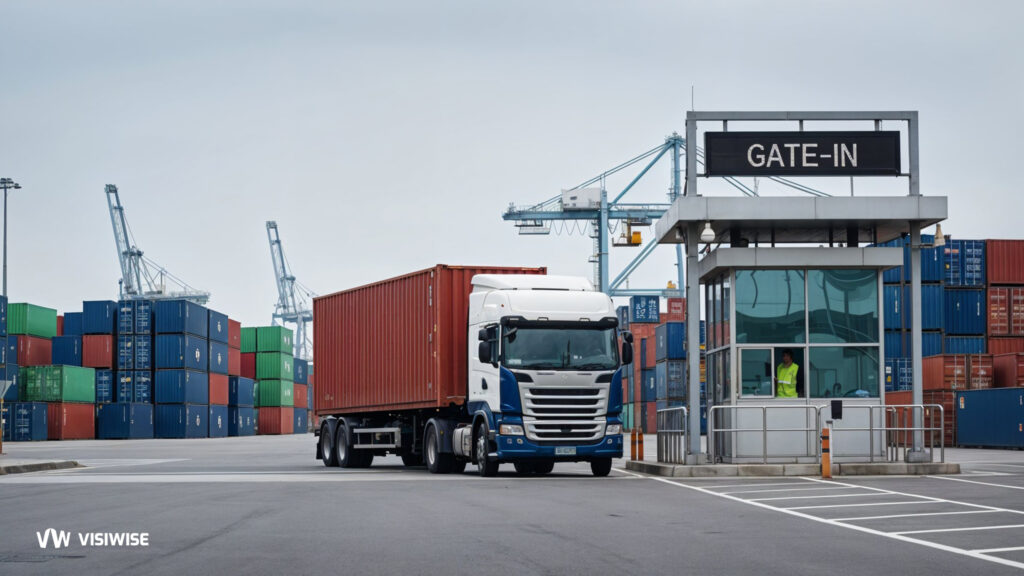Shipping containers face tough weather during transport—scorching summers, heavy rains, freezing winter storms, and more. That’s why strength is key when designing containers and their floors, so they can handle all kinds of stress. They also need to be easy to haul across different transport modes. These containers keep the maritime industry moving, carrying tons of cargo worldwide every year.
Since protecting cargo is their main job, container floors play a vital role in securing what’s inside. This guide will help you understand shipping container floors—what they’re made of, and when and how to replace them.
Why Flooring Matters in Shipping Containers
Understanding the container’s composition and raw materials is crucial to choosing the right flooring. A regular container has an outer steel body and an inner plywood floor. This robust construction is essential to sustain the difficult voyage across the ocean.
The average duration of a freight container is about 10–12 years. The number of trips the container makes across its lifespan is a contributing factor. Most containers have sea-worthy 1.1 inches or 28 mm thick plywood bars on shipping floors.
An average container ships all types of commodities; therefore, it requires a resistant structure. To improve durability and longevity, it is essential to utilize robust and long-lasting materials.
Materials Used in Container Floors
What Are Container Floors Made Of?
A vast majority of shipping container designs have floor plans orchestrated to have plywood flooring. This is mainly made from tropical hardwood. The most commonly used varieties are Keruing and Apitong. They are highly temperature and humidity resistant, thus, fit for use.
Use of Pesticides in Flooring
But solid wood with its many advantages invites over a few huge problems too. It attracts all kinds of pest attacks making it non-viable for utilization. Therefore, it is important for this hardwood to be pest-free to avoid damage to goods before going into the shipping container floors. They are treated with crude pesticides.
However, now, many harmful pesticides such as Aldrin and Dieldrin are banned and restricted from use. There are many other pesticides that are still used that deem the shipping container floors toxic.
The currently used pesticides are insecticides such as Basileum, Taelilium 400, and Radaleum. It is believed that these chemicals are only a threat to insects and not to mammals. However, if the chemical is really a concern, and budget is not an issue, it is recommendable to replace the entire floor.
This is understandable in the case of transportation of goods but when the repurposed shipping containers as homes and office cubicles, these floorings pose a high health hazard. Thus, many manufacturers these days are trying to curate shipping containers with other alternative flooring materials.
The Hidden Dangers of Toxic Flooring
Well, a container floor of a used freight container can be dissipating fumes of harmful oozing chemicals even after many years of treatment with pesticides. even with the new containers, this poses a high-risk health threat as these containers are unsuitable for human inhabitation.
Well, it’s not just this. A bad container floor might also be the reason for the exhaustion of your savings. For instance, you own an old used freight container that has a delaminated floor. You have to ship a large number of goods but you get a call from your freight forwarder that due to the defect in the flooring, some delicate goods worth lacks have been damaged. So, you’ll have to pay a penalty to your customer for causing him a loss due to your ignorance. Moreover, you will lose a consignment and the profit that it was going to generate. In addition to that, you might also lose an old trusted regular customer. And most devastatingly, you’ve just suffered an enormous economic setback thus, you might not be able to get the flooring repaired or replaced. this is turn, might halt your further pre-booked business deals.
Thus, in a nutshell, a damaged or bad container floor can create many problems and be a terrible headache.
Common Floor Problems and How to Identify Them
Typical issues in container floors include:
- Delamination (layers peeling apart)
- Sagging or soft areas
- Mold and rot
- Residual chemical odors
- Visible cracking or splinters
Inspect floors routinely before loading or repurposing to avoid hidden costs and health risks.
Fixing Container Floors: Options and Cautions
Container damage is inevitable as it may occur at any stage of shipping right from the point of loading till unloading.
If you have given up on replacing or removing a new container floor, the only viable option left here would be to repair the original floor.
Firstly, never sand the flooring. Well, you can put it like this. Just like asbestos, the dust isn’t any good for you. If you’ll let it sit there, it won’t cause any effect as it’s relatively harmless. Treating the existing floor might be the only feasible and more economical option.
How to Treat a Plywood Container Floor Safely
If you are someone of the opinion that original shipping container flooring should be intact. Well, the following instruction manual might be just for you.
The most important and pestering concern for one is the hazardous chemicals and their life-threatening after effects. Pesticides would release harmful chemicals that could be hazardous for the health of the inhabitants. Deeming it safer to treat the floors prior to use.
There are many solutions to this, the most popular ones are as below with their step-by-step approach.
Epoxy Treatment
The application of epoxy to the floors will not only act as a sealant but also help to keep the oozing chemicals from the pesticides keep in check. It increases its resistance. It is most useful in the case of shipment of liquids or acids.
A solvent-free epoxy is a best-recommended choice for using on wooden floors. Properly clean the plywood floor with isopropyl alcohol prior to epoxy treatment. As a precautionary measure, make sure to keep proper ventilation while dealing with isopropyl alcohol as the fumes could be toxic and irritating.
Non-breathable Flooring Underlayment
An alternate solution instead of using epoxy is flooring underlayment.
It’s a simple process where the underlayment is placed under the original flooring. This, in turn, is covered with a layer of tiles.
Concrete
The purpose of concrete is similar to the underlayment i.e., to seal the flooring.
Polyethylene plastic covers the original plywood flooring. Then the concrete is laid over the plastic covering.
Removing the Old Floor: A Step-by-Step Guide
Well, removing the older wooden flooring and replacing it with a new container might not be feasible for some but it’s indeed the safest approach.
It’s not an individual decision to make. Many factors have to be taken into account before reaching a final decision. History of your shipping container, your budget, and personal prerequisites are to name a few.
To remove the shipping container plywood flooring, follow the following steps.
Use a hand saw or reciprocating saw to cut the floor bolts from the cross members that are twelve-inch apart. After cutting all the floor bolts, use a pry bar to force the floor panels upwards and outwards.
It could be a relatively slow process but, in the end, it’s a rewarding one. Lifting of floor and completely removing it makes it easier for insulating the shipping container floor by applying spray foam or panel insulation.
Modern Alternatives to Plywood Flooring
It is generally recommendable to change the existing plywood flooring case you are looking out for a new container.
Nowadays, more and more manufacturers are on the lookout for alternative materials for building the shipping container floors. Bamboo is a very popular alternative. Depending upon the purpose of the container, we can modify the shipping container floor. A few most commonly used and standard shipping container floorings used are:
Plywood and Bamboo Flooring
These both are very strong and durable materials. The only drawback the former one has is the susceptibility to pest infestation and pesticide treatment. The latter one is a much better alternative in that respect as it does not require any treatment with pesticides.
Steel and Aluminum
These floorings are overall an excellent choice as they are very sturdy and strong. Their property of water resistance is an important feature for making it very suitable for multiple industrial options.
Vinyl
These shipping container floorings are a popular choice when it’s a question of the transportation of oils and acids. Its application is easy. You can easily roll it out and glue it to the surface of the original flooring. It is water-resistant that deems it easy to clean. Furthermore, making it is an excellent choice for portable bathrooms.
Homely and Office Floors – Imitation Wood Vinyl Planks + Carpet TilesOver the past few decades, repurposing shipping containers has become a trend. They make very lucrative moving houses and office cubicles. The most commonly used materials to cover the wooden floors are imitation wood, vinyl planks, and carpet tiles.
They are easy to install and replace. They are suitable for inhabiting purposes but not for the shipment of freight.
Choosing the Right Floor Type for Your Cargo
Depending on what you are transporting, different floor materials serve better:
- For heavy equipment: Steel or aluminum
- For liquids or acids: Epoxy or vinyl
- For perishables: Non-toxic sealed wood
- For household goods: Treated plywood or vinyl over underlayment
Safety and Environmental Regulations Around Flooring Treatments
Due to the toxic nature of many chemicals used in flooring, regulatory bodies have created safety requirements. Examples include:
- ISPM-15: Applies to wood used in shipping to prevent pest spread
- EU/US bans on specific pesticides like Aldrin
- IMO recommendations for container safety
Maintaining Container Floors: Best Practices
Tips to ensure long-term floor durability:
- Regular inspection for cracks or sagging
- Keep flooring dry and clean
- Avoid dragging sharp or heavy loads directly
- Apply sealants or coatings periodically
- Use protective liners when shipping sensitive cargo
Repurposing Containers: Flooring for Homes and Offices
When turning a container into a living or working space:
- Remove or seal toxic plywood
- Use imitation wood planks or carpet tiles
- Ensure proper insulation underneath
- Ventilate during construction to remove chemical fumes
How to Evaluate the Safety and Sustainability of a Floor
When buying a new shipping container, you may ask the seller to replace the floor with steel or similar material.
For used containers, you’ll need to check the ‘Container Safe Convention plate’ usually found on the front door. It shows information on timber treatment chemicals under three categories: Immunity (IM), treatment chemical, and treatment date.
However, the plate doesn’t include any record of floor damage or replacements.
Signs That It’s Time to Replace a Container Floor
Shipping containers must pass several tests during production to meet ISO norms and specifications. These include stacking, floor and roof, front end wall, door and sidewall safety, strength, wind and watertight (WWT), and maximum gross weight tests. Any deviation from standard values may require the container to be replaced.
Gauges, holes, cracks, or missing layers in the original flooring indicate the need for repair or replacement. You can patch the damaged section with alternate flooring, treat the entire floor, or use a combination of both.
Used freight containers may already have damage such as surface cracks or swelling—called delamination. Though not a major issue at first, it’s wise to monitor for further damage to prevent greater problems and avoid loss of goods.
Final Thoughts
Taking care of your container floor isn’t just about protecting your cargo—it’s about protecting your business and peace of mind. Keep it strong, stay vigilant, and you’ll avoid costly surprises down the road.



